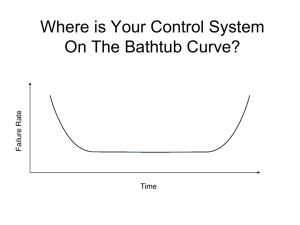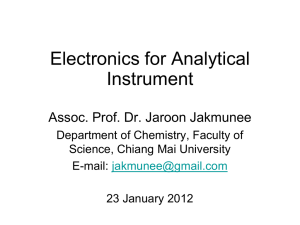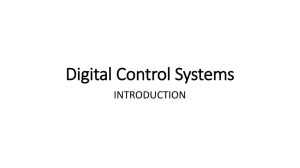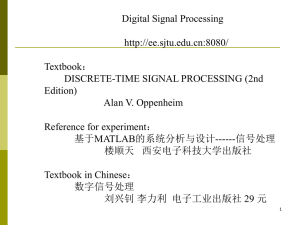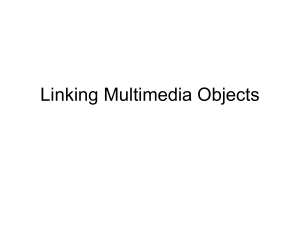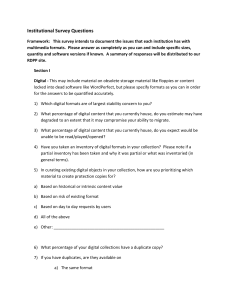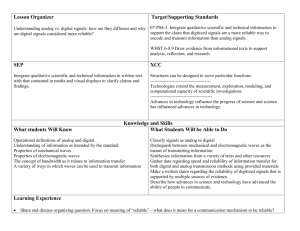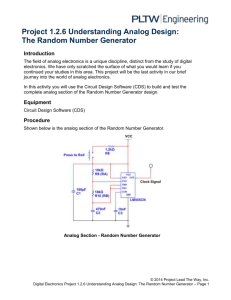Digital to Analog Converter
advertisement
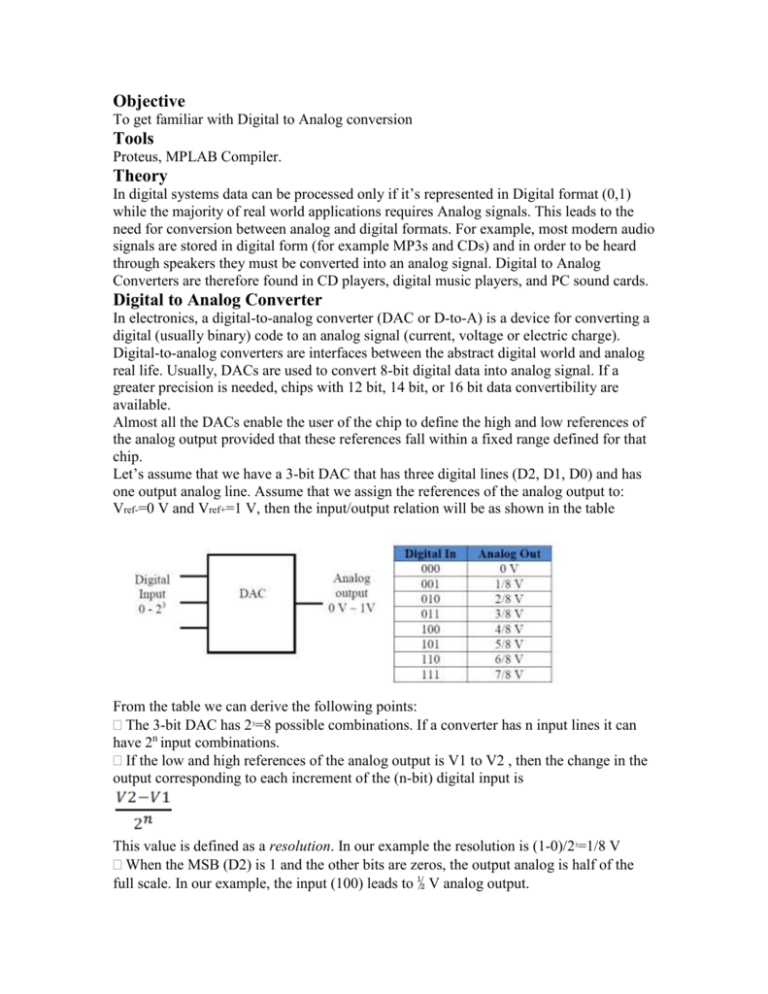
Objective To get familiar with Digital to Analog conversion Tools Proteus, MPLAB Compiler. Theory In digital systems data can be processed only if it’s represented in Digital format (0,1) while the majority of real world applications requires Analog signals. This leads to the need for conversion between analog and digital formats. For example, most modern audio signals are stored in digital form (for example MP3s and CDs) and in order to be heard through speakers they must be converted into an analog signal. Digital to Analog Converters are therefore found in CD players, digital music players, and PC sound cards. Digital to Analog Converter In electronics, a digital-to-analog converter (DAC or D-to-A) is a device for converting a digital (usually binary) code to an analog signal (current, voltage or electric charge). Digital-to-analog converters are interfaces between the abstract digital world and analog real life. Usually, DACs are used to convert 8-bit digital data into analog signal. If a greater precision is needed, chips with 12 bit, 14 bit, or 16 bit data convertibility are available. Almost all the DACs enable the user of the chip to define the high and low references of the analog output provided that these references fall within a fixed range defined for that chip. Let’s assume that we have a 3-bit DAC that has three digital lines (D2, D1, D0) and has one output analog line. Assume that we assign the references of the analog output to: Vref-=0 V and Vref+=1 V, then the input/output relation will be as shown in the table From the table we can derive the following points: The 3-bit DAC has 23=8 possible combinations. If a converter has n input lines it can have 2n input combinations. If the low and high references of the analog output is V1 to V2 , then the change in the output corresponding to each increment of the (n-bit) digital input is This value is defined as a resolution. In our example the resolution is (1-0)/23=1/8 V When the MSB (D2) is 1 and the other bits are zeros, the output analog is half of the full scale. In our example, the input (100) leads to ½ V analog output. For the maximum input (all ones), the output is equal to the value of the full scale minus the value of the resolution. In our example, the maximum digital input (111) leads to the output: 7/8. DAC0800 Chip DAC0800 is a simple 8-bit Digital to Analog converter with no buffering of inputs. It has the following features: Fast conversion time (100 ns) High output compliance(-10 V to +18 V) Complementary current outputs Wide power supply range Interface directly with TTL, CMOS, PMOS and others Wide power supply range ( ±4.5V to ±18V ) Low power consumption Low cost Lab 10 Lab Exercises Part1 Connect the circuit as shown in the figure. Notice that we drive the Chip with a power of 5V so we've connected V+ to +5 and V- to -5. However you can drive the chip with any voltage within the range (±4.5V to ±18V). Change the state of the input switches to find the corresponding voltage by taking the voltmeter reading. Notice that we connect Vref- to 0 and Vref+ to 5V this means the range for the analog output will be within the range 0V to +5V Analyze the results. Lab 10 Part 2 Connect the circuit shown in the Figure below on Proteus ISIS program. Write an assembly program for the PIC18F4550 chip that changes the digital value on PORTD periodically and observe how the speed of rotation of the DC Motor will vary accordingly. Part 3 Write a basic program that do the same as program in part2


